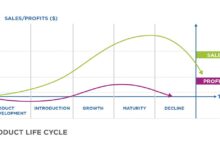Sales Womens Clothes: 7 Shocking Trends Dominating 2024
Want to skyrocket your fashion sales? Dive into the explosive world of sales womens clothes and discover the 7 game-changing trends reshaping the industry in 2024. From AI-driven personalization to eco-conscious shopping, this guide reveals what’s working—and what’s not.
Sales Womens Clothes: The Evolution of Fashion Retail

The landscape of sales womens clothes has undergone a radical transformation over the past two decades. What once relied on seasonal catalogues and in-store foot traffic now thrives on digital platforms, real-time data, and customer-centric strategies. The shift began with the rise of e-commerce giants like Amazon and ASOS, but it’s now being accelerated by social commerce, influencer marketing, and mobile shopping apps.
The Rise of E-Commerce in Women’s Fashion
E-commerce has become the backbone of modern sales womens clothes strategies. According to Statista, global online fashion sales are projected to exceed $1 trillion by 2025, with women’s apparel leading the charge. Brands are investing heavily in user-friendly websites, seamless checkout experiences, and mobile optimization to capture this growing market.
- Mobile shopping now accounts for over 60% of online fashion transactions.
- Augmented reality (AR) try-ons are reducing return rates by up to 25%.
- Same-day delivery options are becoming a competitive necessity.
Platforms like Shopify and BigCommerce have empowered even small boutiques to launch scalable online stores, leveling the playing field between indie designers and multinational retailers. This democratization has led to a surge in niche brands catering to specific demographics, such as plus-size, modest, or sustainable fashion.
Impact of Social Media on Sales Womens Clothes
Social media isn’t just a marketing tool—it’s a direct sales channel. Instagram, TikTok, and Pinterest have evolved into full-fledged shopping ecosystems. With features like Instagram Shops and TikTok’s in-app checkout, users can go from discovery to purchase in seconds.
A 2023 report by Business of Apps found that 44% of Gen Z consumers have made a fashion purchase directly through TikTok. This trend is fueled by short-form video content, where influencers showcase styling tips, unboxings, and real-life wear tests.
“Social commerce is not the future—it’s the present. If your brand isn’t selling directly on social platforms, you’re missing out on 70% of potential buyers.” — Fashion Tech Analyst, Maria Chen
Brands like Fashion Nova and PrettyLittleThing have built empires by leveraging influencer networks and viral content. Their success lies in creating a sense of urgency through limited drops and flash sales, encouraging immediate purchases.
Top 5 Strategies for Maximizing Sales Womens Clothes
To stay competitive in today’s fast-paced market, retailers must adopt proven strategies that drive conversions and build loyalty. These aren’t just tactics—they’re essential components of a modern sales womens clothes operation.
Personalization Through AI and Data Analytics
One of the most powerful tools in modern retail is artificial intelligence. AI-powered recommendation engines analyze customer behavior, purchase history, and browsing patterns to deliver hyper-personalized product suggestions.
For example, Stitch Fix uses AI to curate personalized clothing boxes based on style preferences, body type, and budget. This level of customization increases customer satisfaction and reduces return rates. According to McKinsey & Company, brands that implement AI-driven personalization see a 10–15% increase in sales womens clothes revenue.
- Dynamic pricing models adjust prices in real-time based on demand and user behavior.
- Chatbots provide 24/7 customer support and product recommendations.
- Email campaigns with personalized subject lines have 26% higher open rates.
Investing in customer data platforms (CDPs) allows brands to unify data from multiple touchpoints—website, app, social media, email—creating a 360-degree view of the shopper. This holistic insight enables more effective targeting and segmentation.
Leveraging Influencer and Affiliate Marketing
Influencer marketing remains one of the most effective ways to drive sales womens clothes. Unlike traditional advertising, influencer content feels authentic and relatable, especially when creators share honest reviews and styling ideas.
Micro-influencers (those with 10k–100k followers) often deliver higher engagement rates than celebrities. A study by Influencer Marketing Hub found that micro-influencers generate 22.2% higher engagement and are 6.7x more cost-effective.
Brands like Aerie and Reformation have built long-term partnerships with diverse influencers to promote body positivity and sustainability. These campaigns resonate emotionally with audiences, fostering trust and brand loyalty.
“Consumers don’t buy products—they buy stories. Influencers are the storytellers of modern fashion.” — Digital Marketing Strategist, Jamal Wright
Affiliate programs further amplify reach. By offering commission-based incentives, brands encourage bloggers, YouTubers, and content creators to promote their products. Platforms like ShareASale and Rakuten make it easy to manage these partnerships at scale.
Seasonal Sales and Promotional Campaigns
Timing is everything in the world of sales womens clothes. Seasonal campaigns—such as Black Friday, Cyber Monday, and end-of-season clearances—are critical for boosting revenue and clearing inventory.
Black Friday and Holiday Shopping Frenzy
Black Friday remains the biggest shopping event of the year. In 2023, U.S. consumers spent over $9.8 billion online on Black Friday alone, with apparel being one of the top categories. Retailers now start promotions weeks in advance, using email teasers, early access for loyalty members, and countdown timers to build anticipation.
Brands like Nordstrom and Macy’s offer tiered discounts, where bigger purchases unlock greater savings. This strategy increases average order value (AOV) and encourages bulk buying.
- Early-bird discounts create urgency and reward loyal customers.
- Flash sales lasting 24 hours or less drive immediate action.
- Free shipping thresholds motivate customers to add more items to their cart.
According to National Retail Federation, 184 million Americans shopped during the 2023 Thanksgiving weekend. For sales womens clothes, this period accounts for up to 30% of annual revenue.
End-of-Season Clearance and Inventory Management
Clearance sales are essential for managing overstock and making room for new collections. However, poorly timed or executed clearances can devalue a brand. The key is strategic pricing and marketing.
For example, Zara uses a “fast fashion” model where items are rotated quickly, and unsold pieces are discounted after just a few weeks. This creates a sense of scarcity and encourages faster decision-making.
Best practices for clearance sales include:
- Staggered discounting (e.g., 20% off first week, 40% off second week).
- Exclusive early access for email subscribers or loyalty members.
- Highlighting bestsellers and customer favorites to maintain perceived value.
Effective inventory management systems, such as RFID tagging and demand forecasting software, help brands anticipate stock levels and reduce waste. This is especially important for sustainable brands aiming to minimize overproduction.
The Role of Sustainability in Sales Womens Clothes
Sustainability is no longer a niche concern—it’s a mainstream demand. Today’s consumers, especially Millennials and Gen Z, expect brands to be environmentally and ethically responsible. This shift is reshaping how sales womens clothes are marketed and produced.
Eco-Friendly Materials and Ethical Production
Consumers are increasingly asking: “Who made my clothes?” and “What are they made of?” Brands that answer transparently are winning trust and loyalty.
Organic cotton, TENCEL™, recycled polyester, and hemp are becoming standard materials in sustainable fashion lines. Patagonia and Reformation lead the way by publishing detailed supply chain reports and carbon footprint data.
A 2023 survey by Mintel found that 68% of women consider sustainability when purchasing clothing. This has pushed fast fashion giants like H&M and Zara to launch eco-conscious collections like Conscious and Join Life.
“Sustainability isn’t a trend—it’s a transformation. Brands that ignore it risk becoming irrelevant.” — Ethical Fashion Advocate, Dr. Lena Torres
However, greenwashing—making false or exaggerated environmental claims—remains a challenge. To build credibility, brands must back up their claims with certifications like GOTS (Global Organic Textile Standard) or B Corp status.
Secondhand and Rental Fashion Markets
The resale market is booming. According to ThredUp’s 2023 Resale Report, the secondhand apparel market is expected to double by 2027, reaching $75 billion. Platforms like Poshmark, Depop, and Vestiaire Collective are making it easier than ever to buy and sell pre-owned womens clothes.
Rental services like Rent the Runway and Nuuly offer another sustainable alternative. For a monthly fee, users can rent high-end designer pieces for special occasions or everyday wear. This model appeals to eco-conscious consumers who want variety without the environmental cost of constant buying.
Brands are responding by launching their own resale programs. For example, Eileen Fisher’s “Renew” program takes back old garments, repairs them, and resells them at a discount. This not only reduces waste but also strengthens customer relationships.
Customer Experience and Retention in Sales Womens Clothes
Acquiring new customers is expensive—up to five times more than retaining existing ones. That’s why top-performing brands focus on delivering exceptional customer experiences that foster loyalty and repeat purchases.
Importance of User-Friendly Website Design
Your website is your digital storefront. If it’s slow, confusing, or hard to navigate, customers will leave. A study by Google found that 53% of mobile site visits are abandoned if a page takes longer than three seconds to load.
Best practices for e-commerce websites include:
- Fast loading speeds and mobile responsiveness.
- Clear product images with zoom and 360-degree views.
- Easy navigation with filters for size, color, price, and style.
- Transparent sizing guides and fit recommendations.
Brands like Everlane and Madewell use minimalist design and high-quality visuals to create a premium shopping experience. They also provide detailed product stories, showing the people and processes behind each item.
Loyalty Programs and Customer Retention Tactics
Loyalty programs turn one-time buyers into lifelong customers. Points-based systems, exclusive discounts, birthday rewards, and early access to sales are all effective incentives.
Sephora’s Beauty Insider program is a gold standard in retail loyalty. While focused on cosmetics, its principles apply to sales womens clothes. Members earn points for every purchase, which can be redeemed for rewards. Higher tiers unlock VIP perks like free shipping and private events.
Other retention tactics include:
- Personalized email campaigns based on browsing behavior.
- Post-purchase follow-ups with styling tips and care instructions.
- User-generated content campaigns that encourage customers to share photos.
According to Bain & Company, increasing customer retention rates by just 5% can boost profits by 25% to 95%. For sales womens clothes, this means focusing on lifetime value, not just one-time transactions.
Emerging Technologies Shaping Sales Womens Clothes
Technology is no longer a support function—it’s a core driver of innovation in fashion retail. From AI to blockchain, new tools are redefining how women shop for clothes.
Virtual Try-Ons and Augmented Reality
One of the biggest challenges in online shopping is fit uncertainty. Virtual try-ons powered by AR are solving this problem. Apps like Zeekit (acquired by Walmart) and Wanna Kicks allow users to see how clothes look on their body type using smartphone cameras.
These tools reduce return rates, which can cost retailers up to 30% of revenue. They also enhance engagement—users spend more time interacting with products, increasing the likelihood of purchase.
Brands like Gucci and Nike have integrated AR into their apps, letting customers “try on” sneakers and accessories virtually. As AR technology becomes more accessible, expect widespread adoption across mid-tier and budget fashion brands.
Blockchain for Transparency and Authenticity
Blockchain is emerging as a tool for verifying authenticity and ethical sourcing. Each garment can be assigned a digital ID that tracks its journey from raw material to finished product.
For luxury brands, this combats counterfeiting. For sustainable brands, it proves ethical labor practices and material origins. Companies like Provenance and Arianee are building blockchain platforms specifically for fashion.
While still in early stages, blockchain has the potential to revolutionize consumer trust. Imagine scanning a QR code on a dress and instantly seeing its carbon footprint, factory conditions, and repair history.
Global Market Trends in Sales Womens Clothes
The global market for sales womens clothes is more interconnected than ever. Regional preferences, cultural shifts, and economic factors all influence buying behavior.
Asia-Pacific: The Fastest-Growing Market
The Asia-Pacific region is leading global growth in fashion e-commerce. China, India, and Southeast Asia are seeing rapid urbanization, rising disposable incomes, and increasing internet penetration.
Platforms like Alibaba’s Tmall and India’s Myntra are dominating local markets with localized content, regional language support, and cash-on-delivery options. Live shopping—where hosts sell products in real-time via video streams—is particularly popular in China, generating billions in sales annually.
Western brands entering this market must adapt to local tastes. For example, modest fashion is a major trend in Indonesia and Malaysia, while pastel colors and kawaii aesthetics dominate in Japan and South Korea.
Western Markets: Shift Toward Value and Experience
In North America and Europe, consumers are becoming more value-conscious. Inflation and economic uncertainty have led to “revenge spending” on experiences but more cautious spending on apparel.
Brands are responding by emphasizing quality, versatility, and emotional connection. The “buy less, buy better” philosophy is gaining traction, with consumers investing in timeless pieces rather than fast fashion trends.
At the same time, experiential retail is on the rise. Pop-up shops, fashion shows, and in-store workshops create memorable interactions that deepen brand loyalty. Brands like Anthropologie and & Other Stories excel at blending retail with lifestyle experiences.
What are the most effective platforms for sales womens clothes?
The most effective platforms include Shopify for independent brands, Amazon for broad reach, Instagram and TikTok for social commerce, and specialized marketplaces like Poshmark and Etsy for niche audiences. The best choice depends on your target demographic and business model.
How can small brands compete in sales womens clothes?
Small brands can compete by focusing on niche markets, offering superior customer service, leveraging influencer partnerships, and using data-driven marketing. Building a strong brand story and community engagement also helps differentiate from larger competitors.
What role does sustainability play in modern fashion sales?
Sustainability is a major driver of consumer choice. Brands that prioritize eco-friendly materials, ethical labor, and transparency gain trust and loyalty. Offering resale, rental, or recycling programs further enhances sustainability credentials.
How important is mobile optimization for sales womens clothes?
Extremely important. Over 60% of online fashion purchases are made via mobile devices. A mobile-optimized site with fast loading, easy navigation, and secure checkout is essential for capturing sales.
What are the biggest challenges in sales womens clothes today?
Key challenges include managing inventory in a fast-changing market, reducing return rates, combating greenwashing accusations, standing out in a crowded digital space, and adapting to evolving consumer expectations around ethics and personalization.
The world of sales womens clothes is dynamic, competitive, and full of opportunity. Success no longer depends solely on having great designs—it’s about understanding data, leveraging technology, and building authentic relationships with customers. From AI-powered personalization to sustainable practices and social commerce, the brands that thrive in 2024 are those that embrace innovation while staying true to their values. Whether you’re a startup or an established retailer, the key is to stay agile, listen to your customers, and continuously evolve. The future of fashion sales isn’t just about selling clothes—it’s about creating meaningful experiences that resonate long after the purchase is made.
sales womens clothes – Sales womens clothes menjadi aspek penting yang dibahas di sini.
Further Reading:


